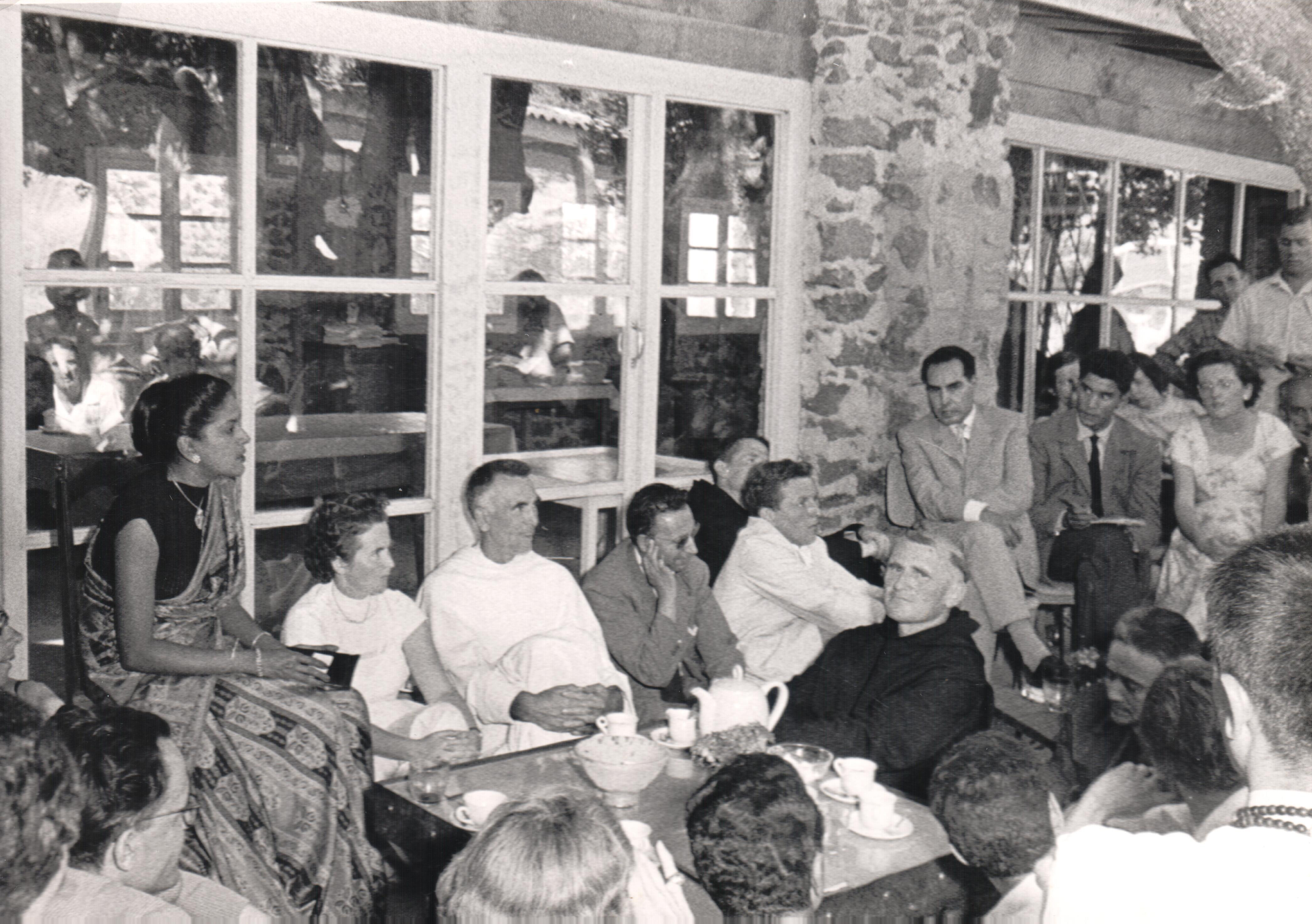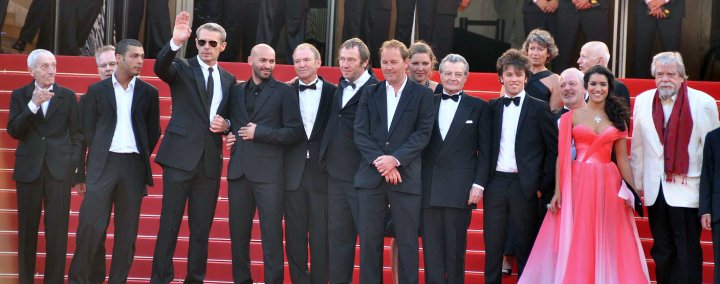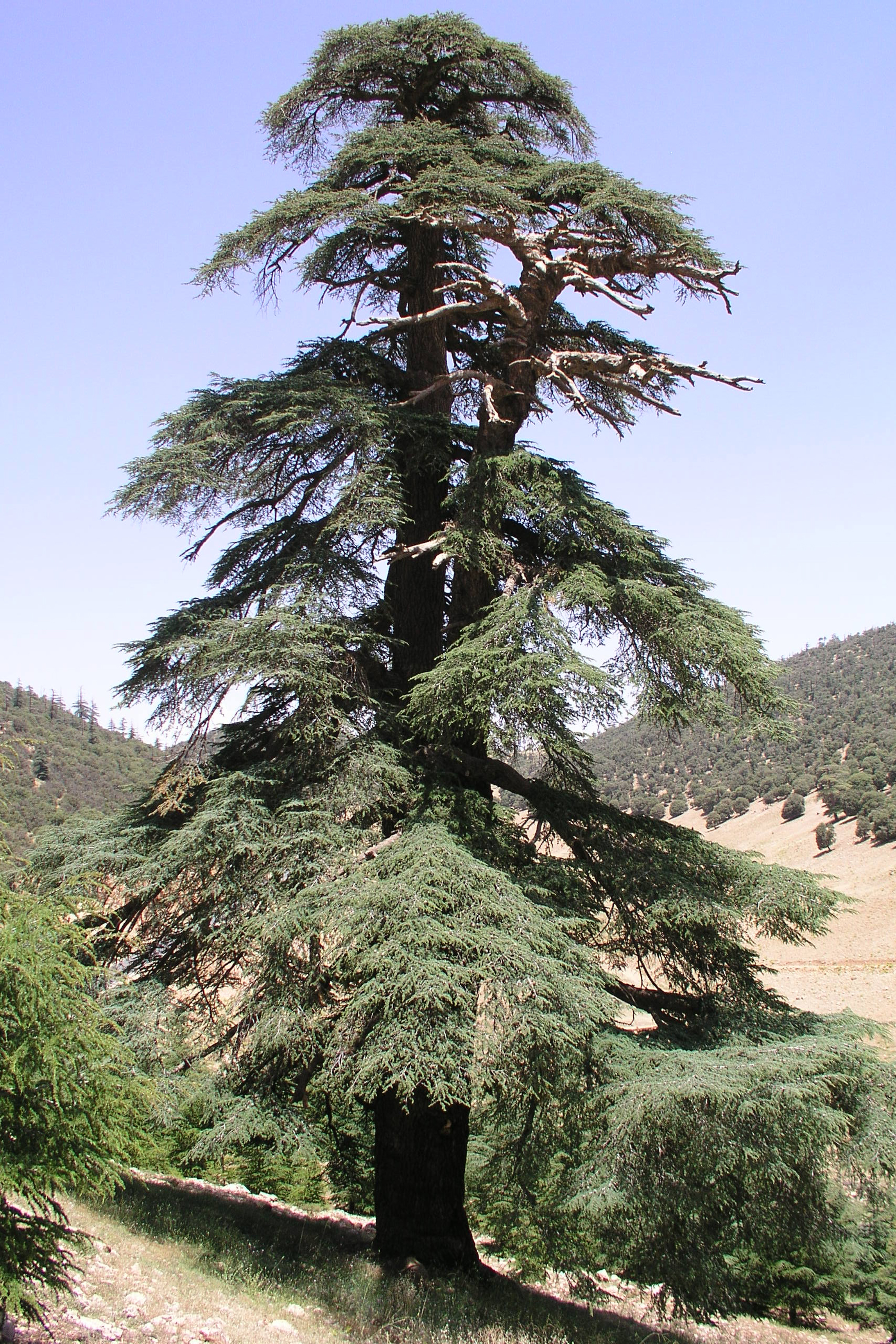|
Azrou
Azrou () is a Morocco, Moroccan town 89 kilometres south of Fes, Fez in Ifrane Province of the Fès-Meknès regions of Morocco, region. Etymology ''Azrou'' is a geomorphological name taken from the landform of a large rock outcrop (Aẓro, ⴰⵥⵔⵓ, means "rock" or "stone" in the Berber language Tamazight) in the centre of the city.Tourist article History The first record of Azrou city in history in a letter sent by Fernão Taveira to king Manuel I of Portugal. Azrou is mostly known for hosting the first high school in the Berber region: the Berber high school of Azrou (now the Tarik Ibn Ziad School). It was built by the French colonial authorities in order to train Moroccans for the colonial administration. It was one of ...[...More Info...] [...Related Items...] OR: [Wikipedia] [Google] [Baidu] |
Monastery Of Toumliline
The Monastery of Toumliline (French language, French: ''Monastère de Toumliline'') was a Benedictines, Benedictine monastery in Toumliline, Morocco. It was the only Benedictine monastery in Morocco and hosted the ''International Meetings'', an annual Interfaith dialogue, interfaith conference. History Foundation The monastery was founded in 1952 when 20 Benedictine monks from the abbey of En-Calcat arrived in Toumliline upon invitation of the Roman Catholic Archdiocese of Rabat, archbishop of Rabat. At the time, the region was known for insecurity as there was a growing national movement and the European monks were seen as suspect. While the French authorities tried to persuade the monks to convert the local Berber population, the monks refused to cooperate, explaining that their purpose was to lead a contemplative life and that any convert would be an outcast in their own country. Only after a year did the local population make contact with the community and a school was opene ... [...More Info...] [...Related Items...] OR: [Wikipedia] [Google] [Baidu] |
Ifrane Province
Ifrane () is a province in the Moroccan region of Fès-Meknès. Its population in 2013 was 156,038 The major cities and towns are:https://archive.today/20121216134403/http://www.world-gazetteer.com/wg.php?x=&men=gcis&lng=en&des=wg&geo=-6464&srt=npan&col=adhoq&msz=1500 * Ain Leuh * Azrou Azrou () is a Morocco, Moroccan town 89 kilometres south of Fes, Fez in Ifrane Province of the Fès-Meknès regions of Morocco, region. Etymology ''Azrou'' is a geomorphological name taken from the landform of a large rock outcrop (Aẓro, ⴰⵥ ... * Had Oued Ifrane * Ifrane * Sidi Addi * Timahdite Subdivisions The province is divided administratively into the following: Geography * Lake Dayet Hachlaf * Lake Dayet Ifrah * Lake Zerrouka * Lake Dayet-Aoua References Ifrane Province {{FèsMeknès-geo-stub ... [...More Info...] [...Related Items...] OR: [Wikipedia] [Google] [Baidu] |
Cèdre Gouraud Forest
Cèdre Gouraud Forest is a woodland area in the Middle Atlas Mountain Range in Morocco. It was named for the French general Henri Gouraud. This forest is located on National Route 8 between Azrou and Ifrane. The forest is notable as a habitat for a sub-population of Barbary macaques, ''Macaca sylvanus''.C. Michael Hogan, 2008 See also * Atlas cedar * Atlas Mountains The Atlas Mountains are a mountain range in the Maghreb in North Africa. They separate the Sahara Desert from the Mediterranean Sea and the Atlantic Ocean; the name "Atlantic" is derived from the mountain range, which stretches around through M ... * Mediterranean woodlands and forests References * C. Michael Hogan, (2008''Barbary Macaque: Macaca sylvanus'', Globaltwitcher.com, ed. Nicklas Stromberg* Justin McGuinness (2003) ''Morocco: The Travel Guide'', Footprint Press Travel Guides, 560 pages Line notes Mediterranean forests, woodlands, and scrub Forests of Morocco Geography of Fès-Meknès ... [...More Info...] [...Related Items...] OR: [Wikipedia] [Google] [Baidu] |
Morocco
Morocco, officially the Kingdom of Morocco, is a country in the Maghreb region of North Africa. It has coastlines on the Mediterranean Sea to the north and the Atlantic Ocean to the west, and has land borders with Algeria to Algeria–Morocco border, the east, and the disputed territory of Western Sahara to Morocco–Western Sahara border, the south. Morocco also claims the Spain, Spanish Enclave and exclave, exclaves of Ceuta, Melilla and Peñón de Vélez de la Gomera, and several small Plazas de soberanía, Spanish-controlled islands off its coast. It has a population of approximately 37 million. Islam is both the official and predominant religion, while Arabic and Berber are the official languages. Additionally, French and the Moroccan dialect of Arabic are widely spoken. The culture of Morocco is a mix of Arab culture, Arab, Berbers, Berber, Culture of Africa, African and Culture of Europe, European cultures. Its capital is Rabat, while its largest city is Casablanca. Th ... [...More Info...] [...Related Items...] OR: [Wikipedia] [Google] [Baidu] |
N13 Road (Morocco)
The N13 road is a national highway (''Route nationale'') in Morocco linking Taouz near Merzouga close to the Algerian border with Azrou, Meknes and other northern locations. North of Meknes there are views of the Zerhoun Mountains and along the N13 is the ancient Roman and Carthaginian settlement of Volubilis, the westernmost provincial capital of the Roman Empire. This Roman city overlies one of the earliest archaeologically recorded Neolithic settlements in Morocco. See also *Barbary ape The Barbary macaque (''Macaca sylvanus''), also known as Barbary ape, is a macaque species native to the Atlas Mountains of Algeria, Tunisia and Morocco, along with a small introduced population in Gibraltar. It is the type species of the genus ' ... References Roads in Morocco {{Morocco-road-stub ... [...More Info...] [...Related Items...] OR: [Wikipedia] [Google] [Baidu] |
Ifrane
Ifrane () is a city in the Middle Atlas region of northern Morocco (population 14,659 as of November 2014). The capital of Ifrane Province in the region of Fès-Meknès, Ifrane is located at an elevation of . "Climatological Information for Ifrane, Morocco", Hong Kong Observatory, 2003, web: -->mor_al/infrane_e.htm HKO-Ifrane In the regional Tamazight language, "ifran" means ''caves''. The modern town of Ifrane was established by the French administration in 1928 during the protectorate era for their administration due to its Alpine climate. Ifrane was conceived as a "hill station" or colonial type of settlement. It is a resort town set high up in the mountains so that Europeans could find relief from the summer heat of the interior plains of Morocco. Ifrane, the house of Lake Dayet Iffer is also a popular altitude training destination. The first permanent settlement of the area dates to the 16th century, when the Sharif Sîdî 'Abd al-Salâm established his community ... [...More Info...] [...Related Items...] OR: [Wikipedia] [Google] [Baidu] |
Of Gods And Men (film)
''Of Gods and Men'' () is a 2010 French drama film directed by Xavier Beauvois, starring Lambert Wilson and Michael Lonsdale. Its original French language title is ''Des hommes et des dieux'', which means "Of Men and of Gods" and refers to a verse from the Bible shown at the beginning of the film. It centers on a true story that happened in the monastery of Tibhirine, where nine Cistercian monks lived in harmony with the largely Muslim population of Algeria, until seven of them were kidnapped and assassinated in 1996 during the Algerian Civil War. Largely a tale of a peaceful situation between local Christians and Muslims before becoming a lethal one due to external forces, the screenplay focuses on the preceding chain of events in decay of government, expansion of terrorism, and the monks' confrontation with both the terrorists and the government authorities that led up to their deaths. Principal photography took place at an abandoned monastery in Azrou, Morocco. The film pre ... [...More Info...] [...Related Items...] OR: [Wikipedia] [Google] [Baidu] |
Atlas Cedar
''Cedrus atlantica'', the Atlas cedar, is a species of tree in the pine family Pinaceae, native to the Rif and Atlas Mountains of Morocco ( Middle Atlas, High Atlas), and to the Tell Atlas in Algeria.Gaussen, H. (1964). Genre ''Cedrus''. Les Formes Actuelles. ''Trav. Lab. For. Toulouse'' T2 V1 11: 295-320 A majority of the modern sourcesFarjon, A. (1990). ''Pinaceae. Drawings and Descriptions of the Genera''. Koeltz Scientific Books .Farjon, A. (2008). ''A Natural History of Conifers''. Timber Press . treat it as a distinct species ''Cedrus atlantica'', but some sources consider it a subspecies of Lebanon cedar (''C. libani'' subsp. ''atlantica''). Description Fully grown, Atlas cedar is a large coniferous evergreen tree, (rarely 40 m) tall, with a trunk diameter of . It is very similar in all characters to the other varieties of Lebanon cedar; differences are hard to discern. The mean cone size tends to be somewhat smaller (although recorded to 12 cm, only rarely ov ... [...More Info...] [...Related Items...] OR: [Wikipedia] [Google] [Baidu] |
Quercus Rotundifolia
''Quercus rotundifolia'', the holm oak or ballota oak, is an evergreen oak native to the western Mediterranean region, with the majority of the population in the Iberian Peninsula and minor populations in Northwest Africa. The species was first described by Jean-Baptiste Lamarck in 1785. It is the typical species of the Iberian ''dehesa'' or ''montado'', where its sweet-astringent acorns are a source of food for livestock, particularly the Iberian pig. Its acorns have also been used for human nourishment since the Neolithic era (7,000 BC). It is placed in section ''Ilex''. Some authors described it as a subspecies of ''Quercus ilex''. Description ''Quercus rotundifolia'' is a medium to large tree, usually in height, but can reach up to with a large, dense, rounded canopy. It has small, leathery, dark-green leaves with a glaucous, densely pubescent underside usually suborbicular to elliptical or lanceolate and are generally spiny to dentate on a younger tree. It has a semi- ... [...More Info...] [...Related Items...] OR: [Wikipedia] [Google] [Baidu] |
Marrakech
Marrakesh or Marrakech (; , ) is the fourth-largest city in Morocco. It is one of the four imperial cities of Morocco and is the capital of the Marrakesh–Safi Regions of Morocco, region. The city lies west of the foothills of the Atlas Mountains. The city was founded circa 1070 by Abu Bakr ibn Umar as the capital of the Almoravid dynasty. The Almoravids established the first major structures in the city and shaped its layout for centuries to come. The red Walls of Marrakesh, walls of the city, built by Ali ibn Yusuf in 1122–1123, and various buildings constructed in red sandstone afterwards, have given the city the nickname of the "Red City" or "Ochre City". Marrakesh grew rapidly and established itself as a cultural, religious, and trading center for the Maghreb. After a period of decline, Marrakesh regained its status in the early 16th century as the capital of the Saadian dynasty, with sultans Abdallah al-Ghalib and Ahmad al-Mansur embellishing the city with an array of s ... [...More Info...] [...Related Items...] OR: [Wikipedia] [Google] [Baidu] |
Khenifra
Khenifra () is a city in northern central Morocco, surrounded by the Atlas Mountains and located on the Oum Er-Rbia River. National Highway 8 also goes through the town. The population, as of a 2019 census, was 228,567. History Khenifra has been the Zayanes' central town for centuries. As such, it was an important military holding in the Zaian War. French General Paul Prosper Henrys had planned to lead the first attack on Khenifra on 10 June 1914. There would be three columns of troops, totaling up to 14,000 officers, to take Khenifra from the Zayanes control.. One column was under Lieutenant-Colonel Henri Claudel, one under Colonel Gaston Cros, and one under Colonel Noël Garnier-Duplessix.. Mouha ou Hammou Zayani led troops to attempt to stop the Khenifra campaign, but was eventually unsuccessful.. The French took control of the town, losing around 600 men in the process. In addition to leading the Zayanes, Hammou was responsible for much of the early 20th century develo ... [...More Info...] [...Related Items...] OR: [Wikipedia] [Google] [Baidu] |





